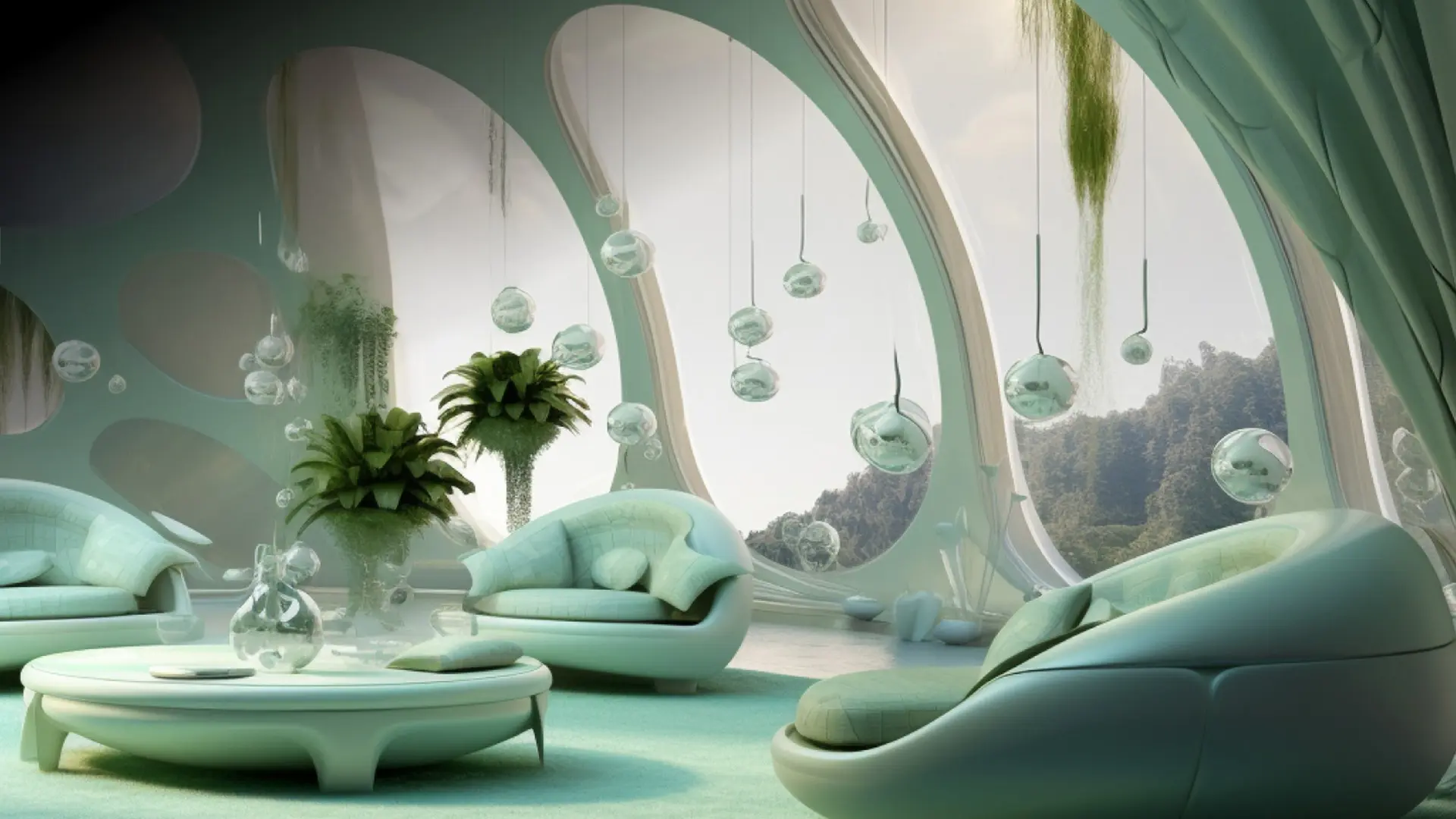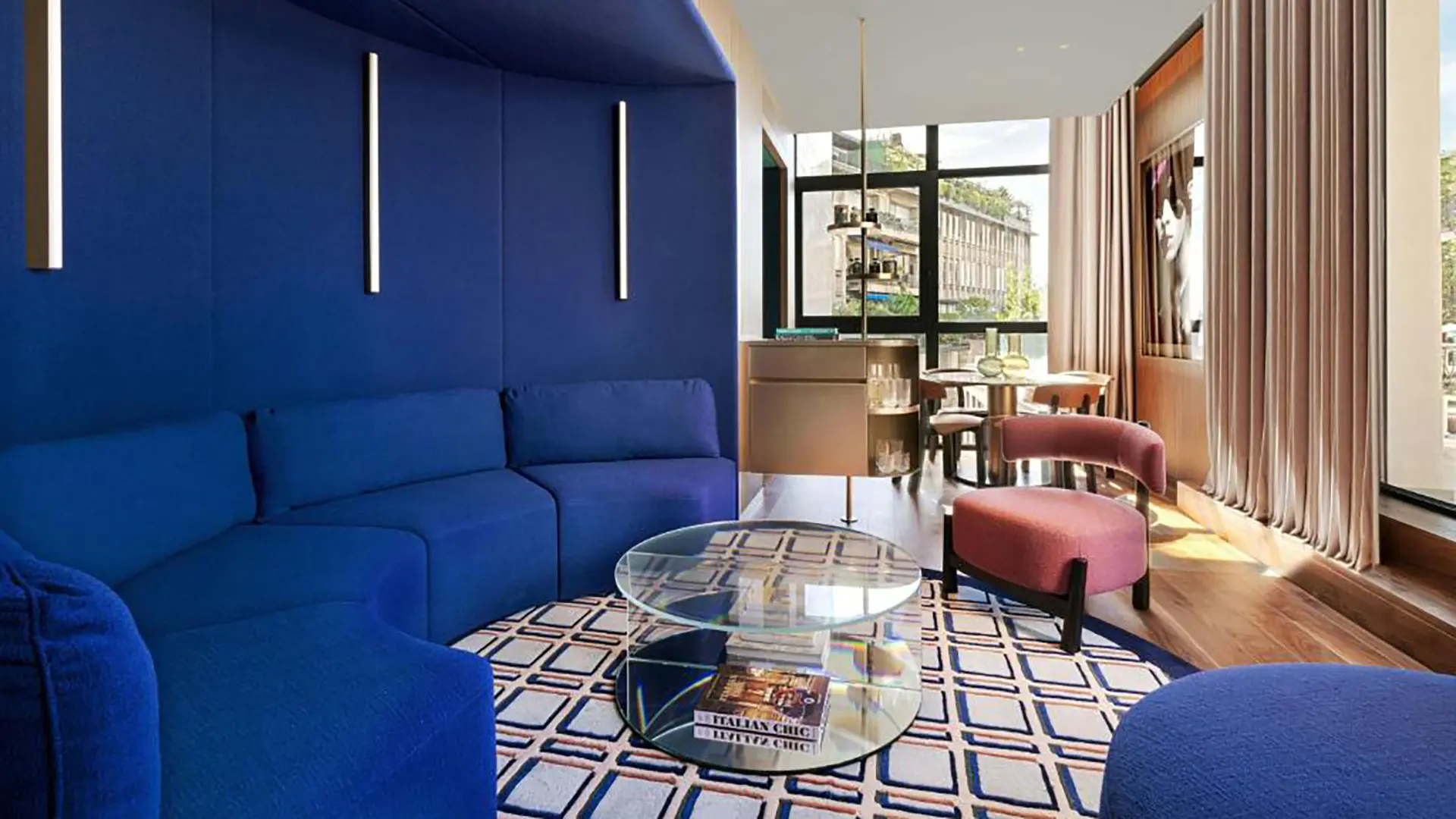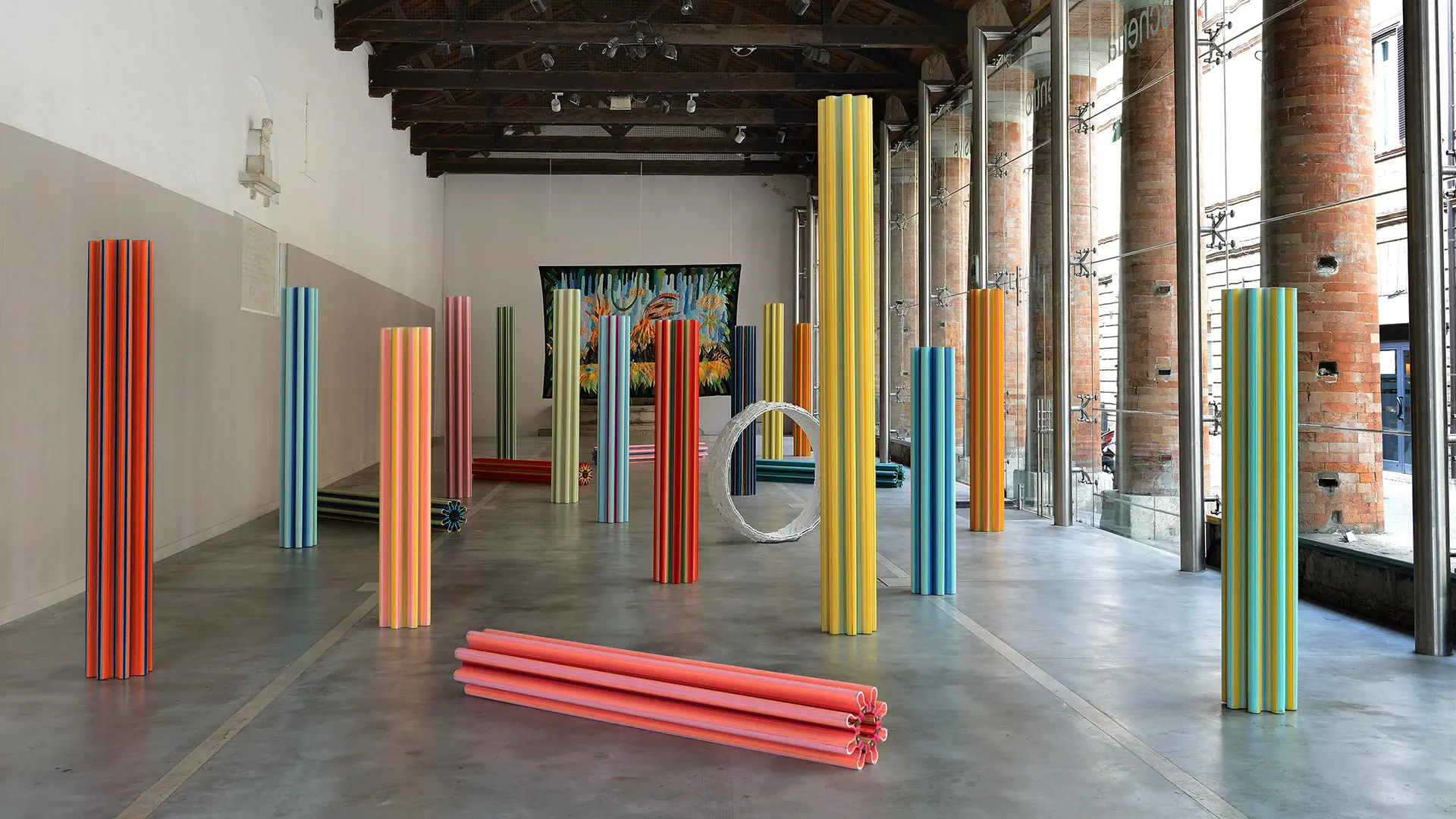From the Tokyo Design Awards, to the NY Product Design Awards & Architectural Design Awards, Best in Design, the NEB Trophy Design Competition, the Good Design Awards® and the Africa International Design Awards (AIDA), all the international news not to be missed in 2026
The Serpentine Pavilion designed by Marina Tabassum opens in London
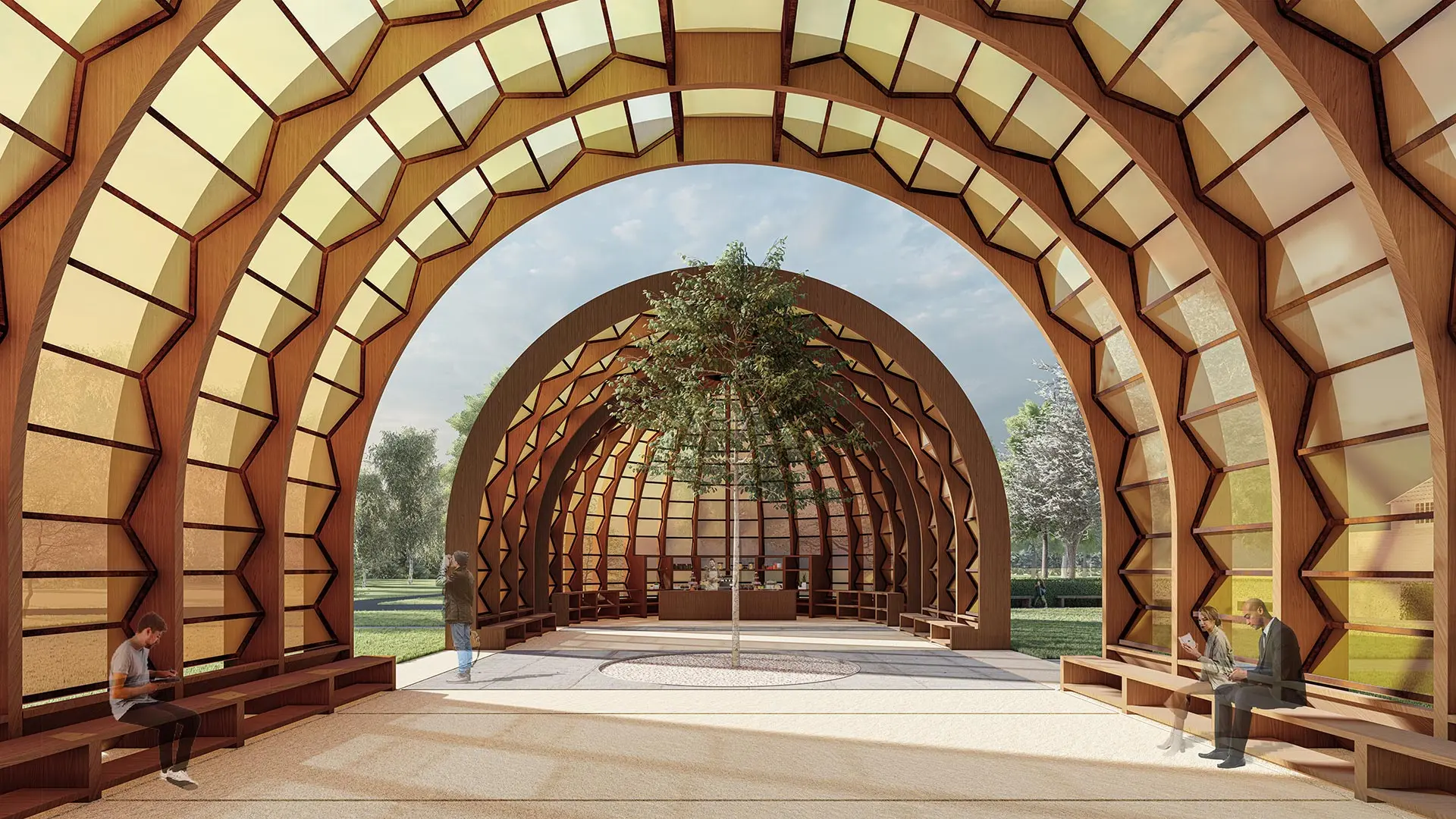
Serpentine 2025 Pavilion A Capsule in Time, designed by Marina Tabassum, Marina Tabassum Architects (MTA). Design render, interior view. Photo: © Marina Tabassum Architects (MTA). Courtesy Serpentine
Included in TIME Magazine's 2024 list of the 100 Most Influential People, the architect and lecturer Marina Tabassum has designed A Capsule in Time, the temporary - and partially kinetic pavilion ‘ that will host the Serpentine Gallery's summer programme until 26th October
Exactly 25 years have passed since London’s Serpentine Gallery launched an ambitious experiment destined to set the standard on a global scale (and encourage more or less successful replicas, at other latitudes). With the commissioning in 2000 of the then 50-year-old Zaha Hadid to design an ephemeral structure, to be built in the British institution's outdoor space and for use only during the summer months, the tradition of the Serpentine Pavilion was taking its very first steps. Since then, emerging talents and figures with major projects already under their belts have been on the receiving end of what is now seen as one the most significant commissions in the United Kingdom, strengthening their reputation. For the 2025 edition, following in the footsteps of the late Zaha Hadid, Kazuyo Sejima with SANAA and, more recently, Frida Escobedo, Sumayya Vally and Lina Ghotmeh, it is again the turn of an architect: Marina Tabassum.
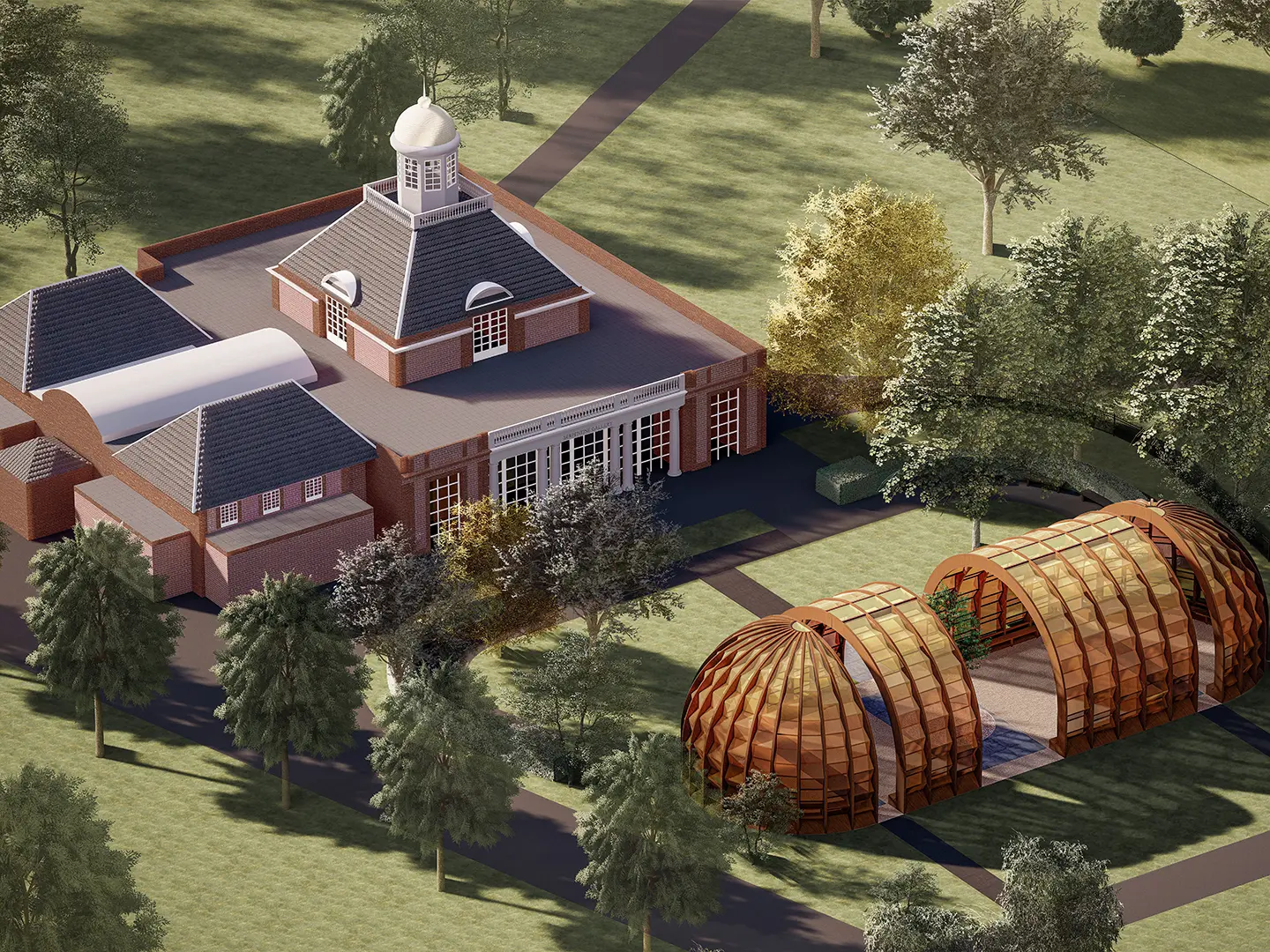
Serpentine 2025 Pavilion A Capsule in Time, designed by Marina Tabassum, Marina Tabassum Architects (MTA). Design render, aerial view. Photo: © Marina Tabassum Architects (MTA). Courtesy Serpentine
The Serpentine Pavilion 2025 designed by Marina Tabassum and Marina Tabassum Architects (MTA)
In line with Hadid’s principle, "There should be no end to experimentation," the pavilion designed by Marina Tabassum, with her firm Marina Tabassum Architects (MTA), entitled A Capsule in Time – is also intended to contribute to the process of transcending the canonical boundaries of the discipline of architecture. Selected by a team of experts, including Serpentine CEO Bettina Korek and the London institution's artistic director Hans Ulrich Obrist, in this work Tabassum has condensed the vision that permeates her distinctive architectural approach, attentive to the qualities of the designated location and its climate, while rooted in and engaging with history and culture, and remaining faithful to her espousal of contemporary language.
A professor at Delft University of Technology, in the Netherlands, and founder in 2005 of Marina Tabassum Architects (with which she has completed architectural interventions with strong social impact in her hometown of Dhaka and in vulnerable areas of Bangladesh), the 1969-born architect stressed that: "When conceiving our design, we reflected on the transient nature of the commission which appears to us as a capsule of memory and time. The relationship between time and architecture is intriguing: between permanence and impermanence, of birth, age and ruin; architecture aspires to outlive time."
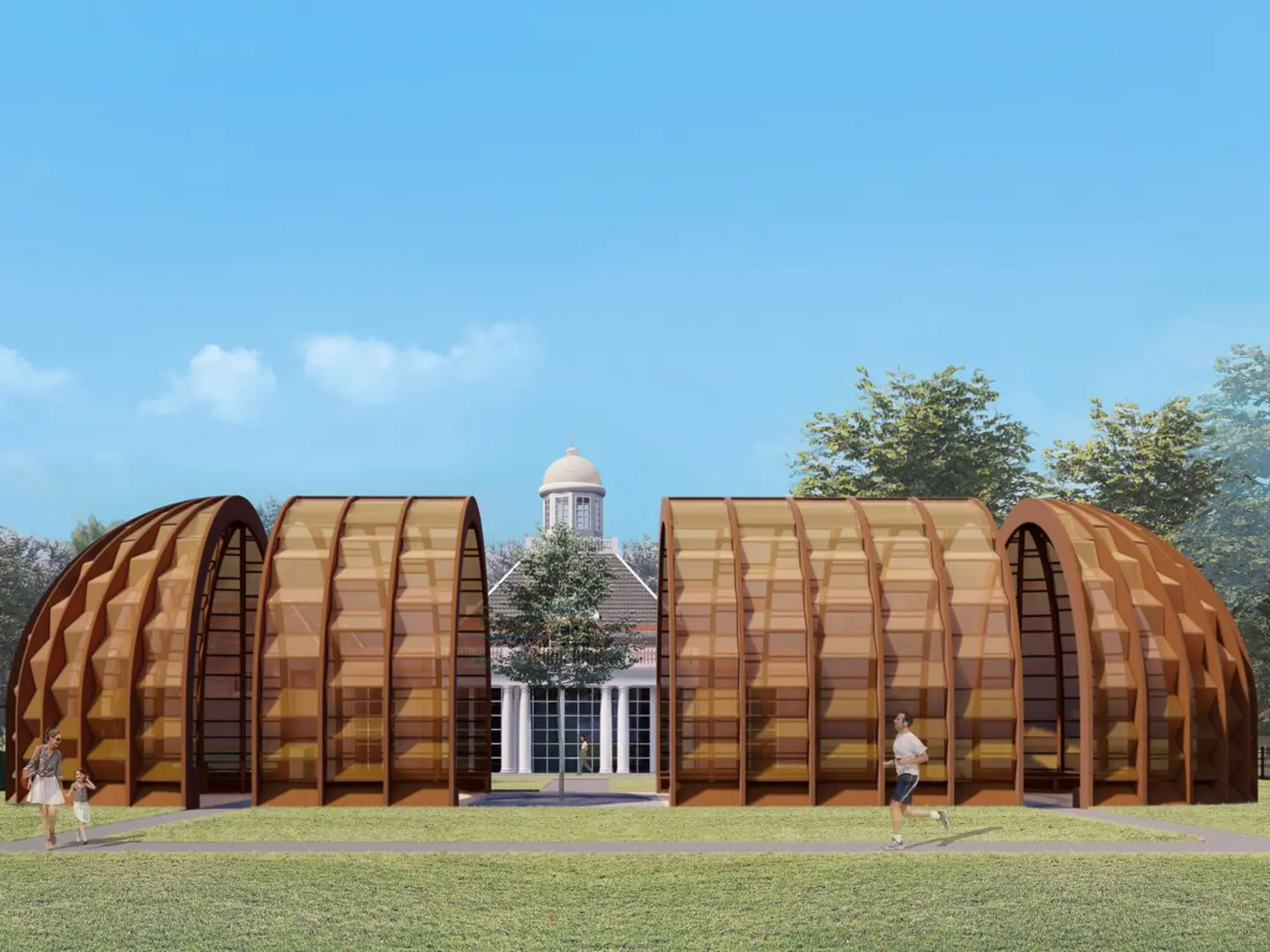
Serpentine 2025 Pavilion A Capsule in Time, designed by Marina Tabassum, Marina Tabassum Architects (MTA). Design render, aerial view. Photo: © Marina Tabassum Architects (MTA). Courtesy Serpentine
A time capsule for intensive and inclusive cultural programming i
In A Capsule in Time, these considerations are translated into a structure articulated in four capsule forms, one segment of which is able to move and connect, thus allowing for an alternative configuration. Both the outer domed elements and the central portions share the same cladding, while a light translucent material is anchored to the wooden structure, used for all the pavilion arches, serving to filter natural light into the interior, similar to the effect of canopies intended for creepers and plants in parks and gardens.
As is the case beneath Shamiyana tents, employed in various parts of Southern Asia for community events or weddings, the "pavilion - time capsule" is set to host initiatives of a different nature, its versatile and sculptural volumetry making it a venue of choice for interface, meetings, and conversations. In particular, chiming with the 25th anniversary of the project, the cultural and live programming for the summer of 2025 will include the Park Night format (an interdisciplinary platform for live music, film, theatre, dance, literature, philosophy, fashion, and technology events) and initiatives specifically designed to reflect on the Serpentine Pavilion commission, its history, and its future prospects.


 Salone Selection
Salone Selection




